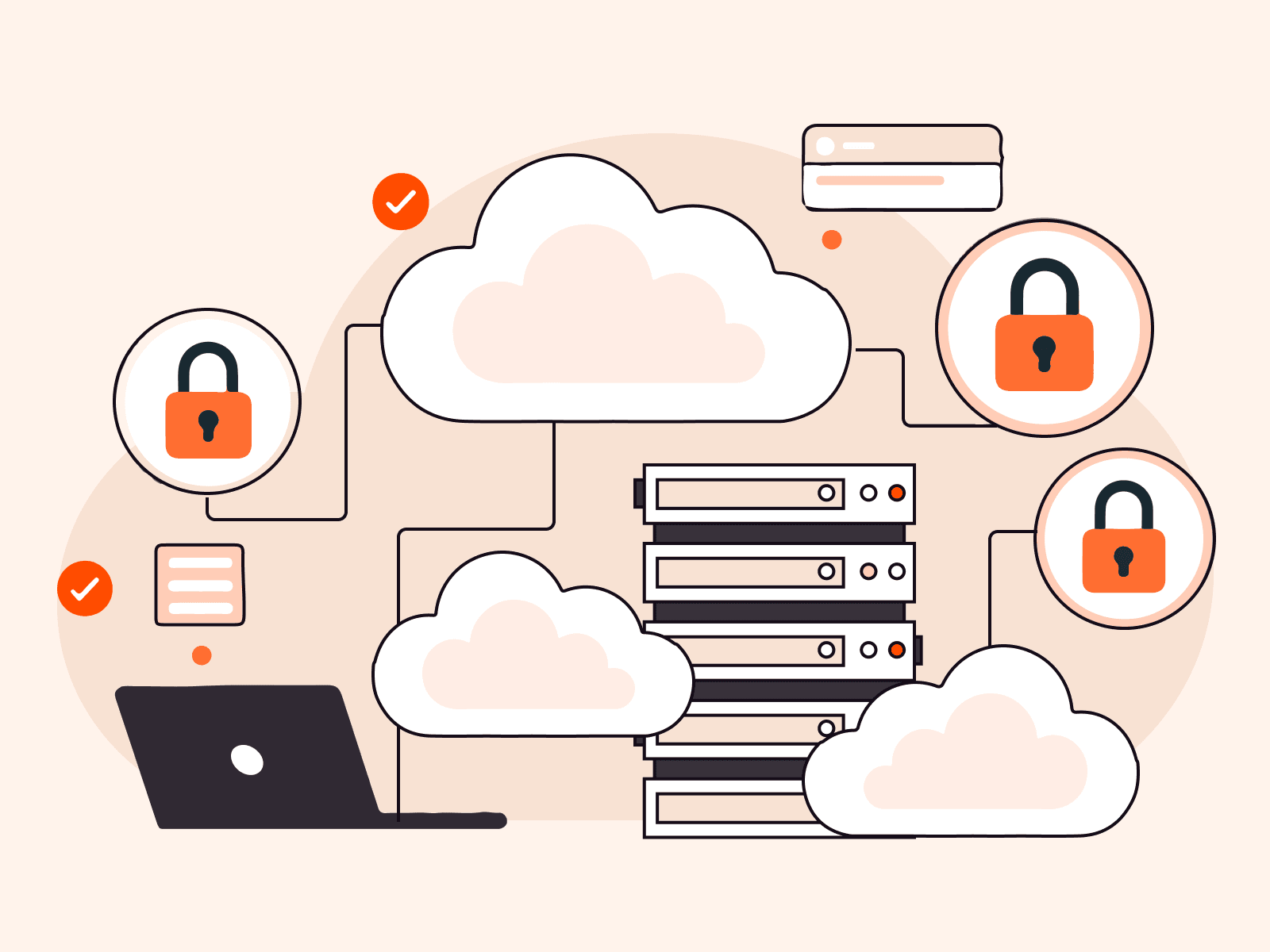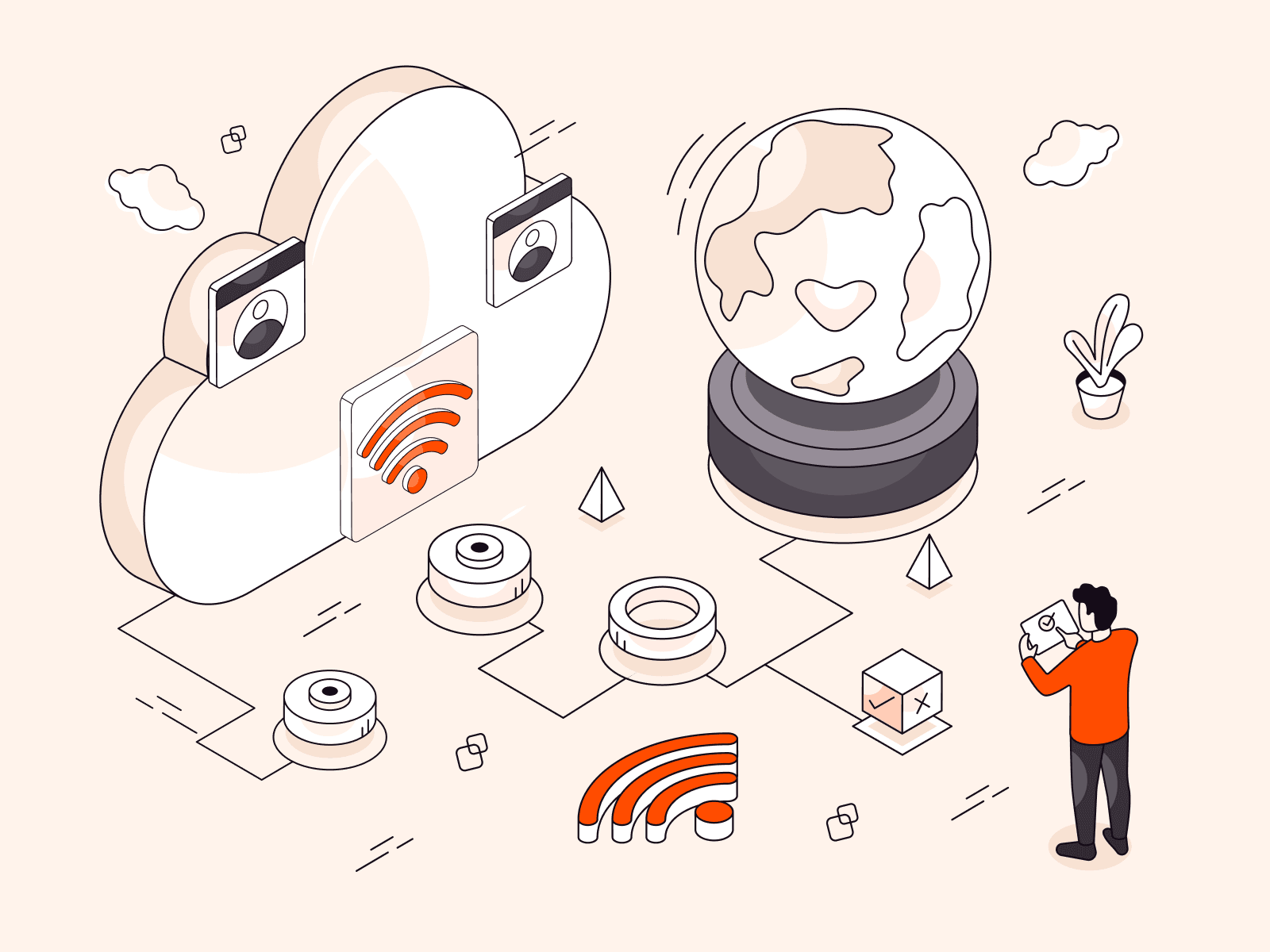As Kubernetes continues to dominate as the go-to for producing containerized applications, securing these clusters becomes vital. This article discusses the complexities of Kubernetes security, highlighting common vulnerabilities and strategic defenses. We explore strategies to protect your Kubernetes environment, from understanding the four C’s of security—Cloud, Clusters, Containers, and Code—to learning the management of Kubernetes secrets. Learn how to strengthen your cluster and why these measures are crucial for resilient infrastructure.
What Is the Security Strategy of Kubernetes
To secure the integrity and confidentiality of data within the cluster, Kubernetes security takes a structured approach that focuses on Authentication, Authorization, and Admission Control. Below, we will look at these basic components of Kubernetes security and demonstrate the appropriate configurations and instructions to improve security measures.
#1 Authentication
Authentication is the initial stage in the security chain, guaranteeing that only legitimate users may access the Kubernetes API. Kubernetes supports a variety of authentication mechanisms:
- Static Passwords and Tokens. This method relies on passwords and tokens that are predefined in the Kubernetes API server’s initial configuration. These credentials are often configured when the cluster is created, providing a basic level of access control. This strategy is commonly used for first installs or in contexts with reduced complexity and security requirements.
- Service Account Tokens. Kubernetes manages customized tokens that are automatically assigned to pods. They are generally used to provide programmatic access to the Kubernetes API from within the pod. Service account tokens enable secure service-to-service communication within the cluster, ensuring that applications have the necessary permissions to run properly even without human interaction.
- Client Certificates. For a more secure method of authentication, Kubernetes supports the use of X509 certificates. This approach uses public key infrastructure (PKI) to verify the identity of users and systems. Client certificates must be signed by a trusted certificate authority (CA) that the Kubernetes API server recognizes. This method is highly secure and commonly used in production environments to ensure secure connections and data integrity.
- Static Files. Kubernetes can authenticate users based on credentials stored in static files. This method is similar to using static passwords and tokens, but it allows for the storage of multiple user credentials in a file, which the API server reads at startup. It provides a simple and direct way to manage access for a fixed list of users and is often used in smaller or less dynamic environments.
- External Authentication Providers. To enhance flexibility and integrate with existing enterprise systems, Kubernetes can delegate authentication to external authentication providers. This includes systems such as LDAP (Lightweight Directory Access Protocol), SAML (Security Assertion Markup Language), and OAuth2. Integration with these external systems allows Kubernetes to leverage robust, enterprise-grade user management and authentication infrastructures, providing centralized control over access and enabling features like multi-factor authentication and single sign-on (SSO).

Example commands for managing authentication include:
# Create a CSR for a new user with client certificate authenticationopenssl req -new -key user-key.pem -out user.csr -subj "/CN=user/O=group"# View authorized tokenskubectl get secrets#2 Authorization
Once authenticated, Kubernetes uses authorization to determine which actions an authenticated user can take. Kubernetes offers multiple types of authorization:
- Role-Based Access Control (RBAC). This approach of access management grants permissions depending on roles within the Kubernetes environment. RBAC is highly flexible, allowing administrators to build finely granular access control settings. Roles, or sets of permissions, are allocated to users, groups, and service accounts. These permissions specify the roles’ actions, such as viewing, editing, or deleting resources. This strategy benefits large businesses with complicated processes and diverse user responsibilities, as it ensures that users can only access the information they need to execute their duties.
- Attribute-Based Access Control (ABAC). ABAC enables or refuses actions depending on various criteria, including user traits, environmental attributes, resource categories, and actions. This approach offers great flexibility and granularity, allowing for the implementation of sophisticated security rules that match an organization’s specific security requirements. For example, a policy may restrict access to a resource to specified times of day or network locations, thus increasing security and control.
- Webhook Mode. In webhook mode, Kubernetes calls an external service to determine access rights. This adaptable option allows Kubernetes to connect with external authorization systems that enforce their access requirements. The webhook delivers information about the request to the external service, which subsequently responds by allowing or denying the request based on its policies. This solution is especially beneficial for enterprises with an external access control system and wish to easily integrate it with Kubernetes, providing consistent enforcement of security policies across several platforms.

Commands to manage RBAC include:
# Create a role with specified permissionskubectl create role developer --verb=create --verb=get --resource=pods# Bind a role to a user within a namespacekubectl create rolebinding developer-binding --role=developer --user=user1 --namespace=dev#3 Admission Control
Admission controllers are software modules that operate as gatekeepers, intercepting API requests for the Kubernetes server after authentication and authorization. They can change or reject requests to enforce policies. Standard admission controls are:
- PodSecurityPolicy (PSP). PodSecurityPolicy is a Kubernetes feature that controls security-sensitive parts of pod setups. This policy governs permissions for pod creation and operations throughout the cluster, allowing administrators to enforce rules that limit the use of dangerous features such as privileged containers, prevent the use of host networking and file systems, restrict the injection of additional capabilities, and control access to volume types and filesystems. PSP reduces the risk of security vulnerabilities caused by misconfigured pods by specifying a set of constraints a pod must meet before deployment. This is especially important in contexts where security is critical, as it prevents potential escalation and exploits at the application level.
- NodeRestriction. This Kubernetes admission controller restricts the kubelet from executing operations only on resources relevant to its node. This prohibits the kubelet from reading or altering resources assigned to other nodes, which is critical for the security and integrity of node operation. The NodeRestriction admittance plugin guarantees that kubelets follow the concept of least privilege, lowering the likelihood of an intranode security breach in which a compromised kubelet affects the rest of the cluster.
- NamespaceLifecycle. This admission controller oversees the lifecycle of namespaces in the Kubernetes cluster. It inhibits the deletion of system-critical namespaces that are required for the cluster’s functioning and the creation of new objects in a namespace that is about to be deleted. This controller contributes to the cluster’s organizational order an9089d operational efficiency by controlling namespace lifecycles. It is critical for resource cleanup, namespace allocation, and preventing resource leaks, which can result in denial-of-service assaults or resource depletion.

Example command to enforce a security policy:
# Apply a PodSecurityPolicykubectl apply -f podsecuritypolicy.yamlNow that we’ve covered the basics of Kubernetes Security Strategy, let’s dig further into our following topic: how to successfully secure your Kubernetes cluster. In this section, we’ll go over a variety of security methods and recommended practices for protecting your cluster from potential attacks and vulnerabilities.
How Do I Secure My Kubernetes Cluster?
Securing a Kubernetes cluster is a multifaceted strategy that necessitates the implementation of appropriate controls across many system components and layers to protect against unauthorized access and other security risks. This procedure includes creating network policies to limit traffic flow, implementing role-based access control (RBAC) to manage user permissions, and deploying security tools to monitor and respond to suspicious activity. To protect against vulnerabilities, the Kubernetes environment should also be updated and patched regularly. Ensuring data encryption in transit and at rest is critical to ensuring the confidentiality and integrity of the cluster’s data. Each of these stages is crucial for developing a solid security framework that protects your Kubernetes infrastructure from both internal and external. We will discuss these aspects in more detail in the following section.
#1 Control Access to the Kubernetes API
The Kubernetes API is the central interface for cluster administration hence security is crucial. It is critical to regulate and limit who can access the cluster and what activities they can take.
- Use TLS for All API Traffic. The Kubernetes API is the central interface for cluster administration; hence, security is crucial. It is critical to regulate and limit who can access the cluster and what activities they can take.
# Check TLS settings in the Kubernetes API server configurationps aux | grep kube-apiserver | grep -- --tls-cert-file- Authentication Mechanisms. Depending on the cluster size and usage, choose an appropriate authentication mechanism, such as X.509 client certificates, static bearer tokens, or integrating with external identity providers like OIDC or LDAP.
# Example: List the current authenticated sessionskubectl get serviceaccounts#2 Implement Role-Based Access Control (RBAC)
Role-Based Access Control (RBAC) is a method for regulating access to computer or network resources based on the roles of individual users within your enterprise.
- Configure RBAC Policies. Set up roles and role bindings that define what operations are allowed for each user or group within the cluster. RBAC ensures that users have the minimum necessary access that their roles require.
# Create a role that includes permission to list pods and serviceskubectl create role example-role --verb=list --resource=pods,services --namespace=default# Bind this role to a userkubectl create rolebinding example-binding --role=example-role --user=john.doe --namespace=default#3 Secure Node and Pod Access
Kubelets, which run on each node, should have restricted access to ensure they can only perform actions required for their operation.
- Enable Kubelet Authentication and Authorization. Make sure kubelets are authenticated and authorized before they can interact with the Kubernetes API.
# Example command to set kubelet authentication and authorizationkubelet --authentication-token-webhook=true --authorization-mode=Webhook#4 Use Network Policies
Network policies define how groups of pods are allowed to communicate with each other and other network endpoints.
- Define and Implement Network Policies. Create specific rules that govern the traffic between pods within your cluster to isolate and secure network traffic.
# Example network policy to deny all traffic except from the same namespaceapiVersion: networking.k8s.io/v1kind: NetworkPolicymetadata: name: deny-cross-namespace namespace: defaultspec: podSelector: {} policyTypes: - Ingress ingress: []# Apply the network policykubectl apply -f deny-cross-namespace.yaml#5 Audit and Monitor Cluster Activities
Keeping a close watch on the activities within your cluster is crucial for early detection of potential security incidents.
- Enable Audit Logs. Set up audit logs to record actions taken on the API for analysis in the event of an incident.
# Example of enabling audit logs in Kuberneteskube-apiserver --audit-log-path=/var/log/kubernetes/audit.log --audit-log-maxage=30 --audit-log-maxbackup=10 --audit-log-maxsize=100What Are the Four C’s of Kubernetes Security
The four C’s of Kubernetes security take an extensive strategy to protect cloud-native applications and their environments, from infrastructure to application. These levels of protection are crucial because they form an in-depth defense, ensuring that if one layer is compromised, the remaining layers contribute to total security. There are four C’s:
#1 Cloud (or Cluster)
This layer refers to the security of the underlying infrastructure on which the Kubernetes cluster operates. Whether your cluster is hosted on a public cloud provider like Gcore, or on-premises in your own data centers, securing this layer involves:
- Verify that the infrastructure is configured correctly, such as with firewalls, private networks, and secure access restrictions.
- Installing security patches and updates on your operating systems and physical servers.
- The infrastructure is being monitored for threats and weaknesses.
#2 Clusters
Securing the Kubernetes cluster itself is crucial since it directly manages the containers and orchestrates their deployment and operation. This includes:
- Configuring Kubernetes components securely, including the API server, etcd, kubelet, and network policies.
- Using Role-Based Access govern (RBAC) to govern who has access to the Kubernetes API and what actions they can take.
- Allowing audit logs to track what activities are occurring within the cluster.
- To prevent vulnerabilities, Kubernetes should be updated and patched on a regular basis.
#3 Containers
Securing containers that run applications and their dependencies is essential to maintaining strong Kubernetes security. This procedure entails using trustworthy base images and running extensive vulnerability assessments to ensure the containers are as secure as feasible from the outset. Furthermore, setting security contexts for containers helps limit their privileges and access to host resources, reducing the risk of a compromise. It is also critical to ensure that containers only use the network and disk resources they require, reducing the attack surface. Finally, runtime security monitoring is needed to detect and prevent malicious activity within the containerized system, ensuring continuous protection against threats.
#4 Code
At the application layer, code security is crucial to ensuring the overall safety of applications running within containers. This security strategy entails using safe coding techniques to protect against vulnerabilities like SQL injection and cross-site scripting. Additionally, static and dynamic analysis techniques are critical in discovering potential security problems in code prior to deployment. Efficient secret management is also required to protect sensitive information from unauthorized users. Furthermore, encrypting data transported to and from the application protects sensitive information from interception and unwanted access.
By carefully addressing each of these layers, enterprises may improve the security of their Kubernetes systems and defend them from a variety of security risks. This approach emphasizes the importance of comprehensive security measures that consider all areas of system architecture and deployment.
Conclusion
Securing your Kubernetes cluster is crucial for protecting your infrastructure. Understanding and implementing Kubernetes security principles such as authentication, authorization, admission control, and network policies can help you build a strong defense against security threats. The four C’s of Kubernetes security (Cloud, Clusters, Containers, and Code) emphasize the layered security strategy required for complete protection. With these measures in place, you can protect your Kubernetes environment and prepare for future scalability and expansion. If you’re looking to leverage the benefits of Kubernetes without the complexities and cost escalations of managing it yourself, Gcore offers Managed Kubernetes, simplifying the process for companies and technical decision-makers.
Related articles
Subscribe to our newsletter
Get the latest industry trends, exclusive insights, and Gcore updates delivered straight to your inbox.






